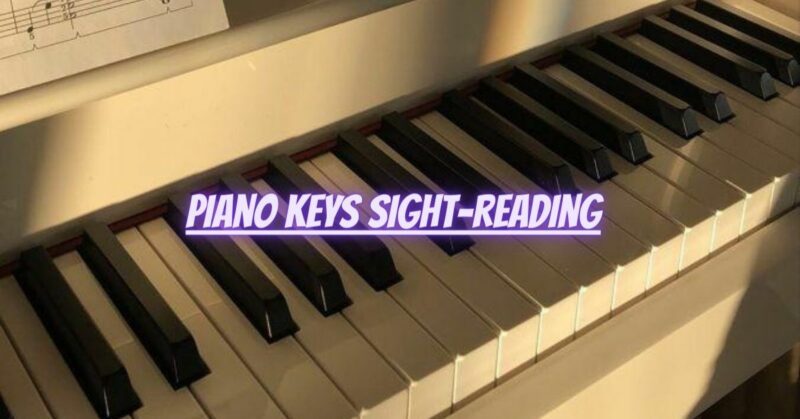Sight-reading is an essential skill for any pianist, enabling them to play music on the spot without prior preparation. It empowers musicians to explore new pieces, accompany other musicians, and participate in impromptu performances. Sight-reading on the piano keys requires a combination of technical proficiency, music theory knowledge, and mental agility. In this article, we’ll delve into the art of sight-reading on the piano keys, its importance, effective techniques, and tips to enhance your sight-reading abilities.
The Significance of Piano Keys Sight-Reading:
- Musical Fluency: Sight-reading builds musical fluency, allowing you to play a wide range of repertoire with confidence and ease.
- Musical Collaboration: Sight-reading is invaluable when collaborating with other musicians, as it enables you to follow their lead and adapt to the music in real-time.
- Quick Learning: Mastering sight-reading enhances your ability to learn and internalize new music faster.
Effective Techniques for Piano Keys Sight-Reading:
- Know Your Keys: Familiarize yourself with key signatures, scales, and chords. Understanding these fundamentals will help you quickly identify patterns in the music.
- Scanning Ahead: Practice scanning the music ahead of the notes you are currently playing. This helps you anticipate upcoming challenges and transitions.
- Hand Independence: Develop hand independence through separate hand practice. Sight-read each hand’s part individually before attempting hands-together playing.
- Recognize Rhythms: Focus on recognizing common rhythms and rhythmic patterns, as they often repeat in different pieces.
- Focus on the Melody: In the beginning, prioritize playing the melody accurately while simplifying accompaniment or harmony if necessary.
Tips to Enhance Your Piano Keys Sight-Reading:
- Regular Practice: Incorporate sight-reading practice into your daily routine. Start with simple pieces and gradually progress to more challenging ones.
- Varied Repertoire: Practice sight-reading different styles of music, including classical, jazz, pop, and contemporary. This exposes you to diverse rhythms, dynamics, and articulations.
- Keep Moving Forward: Avoid stopping or going back to correct mistakes while sight-reading. Continue playing even if you make errors to maintain the flow of the music.
- Stay Relaxed: Maintain a relaxed posture and hand position while sight-reading. Tension can impede your ability to play smoothly.
- Use a Metronome: Practice with a metronome to develop a steady sense of rhythm and tempo.
- Record Yourself: Record your sight-reading sessions and listen to them afterward. This provides valuable feedback on areas that need improvement.
Patience and Persistence:
Sight-reading is a skill that improves over time with consistent effort. Be patient with yourself and acknowledge that mistakes are a natural part of the learning process. With dedication and persistence, your sight-reading abilities will grow, and you’ll gain the confidence to tackle new music with ease.
Conclusion:
Piano keys sight-reading is a powerful tool that unlocks the door to limitless musical possibilities. As you develop this skill, you’ll find joy in exploring new pieces, collaborating with fellow musicians, and discovering the beauty of music in its raw form. Embrace the journey of sight-reading, and with each new note you encounter, let the magic of music guide your fingers on the piano keys. Happy sight-reading!


